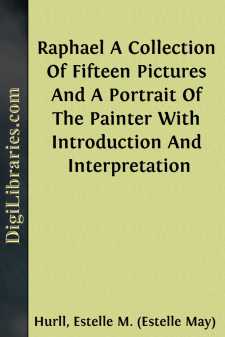Categories
- Antiques & Collectibles 13
- Architecture 36
- Art 48
- Bibles 22
- Biography & Autobiography 813
- Body, Mind & Spirit 142
- Business & Economics 28
- Children's Books 14
- Children's Fiction 11
- Computers 4
- Cooking 94
- Crafts & Hobbies 4
- Drama 346
- Education 46
- Family & Relationships 57
- Fiction 11829
- Games 19
- Gardening 17
- Health & Fitness 34
- History 1377
- House & Home 1
- Humor 147
- Juvenile Fiction 1873
- Juvenile Nonfiction 202
- Language Arts & Disciplines 88
- Law 16
- Literary Collections 686
- Literary Criticism 179
- Mathematics 13
- Medical 41
- Music 40
- Nature 179
- Non-Classifiable 1768
- Performing Arts 7
- Periodicals 1453
- Philosophy 64
- Photography 2
- Poetry 896
- Political Science 203
- Psychology 42
- Reference 154
- Religion 513
- Science 126
- Self-Help 84
- Social Science 81
- Sports & Recreation 34
- Study Aids 3
- Technology & Engineering 59
- Transportation 23
- Travel 463
- True Crime 29
Estelle M. (Estelle May) Hurll
Estelle May Hurll (1863–1924) was an American author and art historian known for her insightful writings on art and artists. She contributed significantly to the understanding and appreciation of art through her accessible and engaging books, which often focused on interpreting the lives and works of famous artists. Her works, including "The Madonna in Art" and "The Life of Our Lord in Art," continue to be valued for their scholarly approach and rich narrative style.
Author's Books:
Sort by:
"The Italian sculptors of the earlier half of the fifteenth century are more than mere forerunners of the great masters of its close, and often reach perfection within the narrow limits which they chose to impose on their work. Their sculpture shares with the paintings of Botticelli and the churches of Brunelleschi that profound expressiveness, that intimate impress of an indwelling soul, which is...
more...
INTRODUCTION I. ON REMBRANDT'S CHARACTER AS AN ARTIST A general impression prevails with the large picture-loving public that a special training is necessary to any proper appreciation of Rembrandt. He is the idol of the connoisseur because of his superb mastery of technique, his miracles of chiaroscuro, his blending of colors. Those who do not understand these matters must, it is supposed, stand...
more...
INTRODUCTION I. ON RAPHAEL'S CHARACTER AS AN ARTIST. No one of the old Italian masters has taken such a firm hold upon the popular imagination as Raphael. Other artists wax and wane in public favor as they are praised by one generation of critics or disparaged by the next; but Raphael's name continues to stand in public estimation as that of the favorite painter in Christendom. The passing...
more...
I. ON MICHELANGELO'S CHARACTER AS AN ARTIST. Michelangelo's place in the world of art is altogether unique. His supremacy is acknowledged by all, but is understood by a few only. In the presence of his works none can stand unimpressed, yet few dare to claim any intimate knowledge of his art. The quality so vividly described in the Italian word terribilità is his predominant trait. He is one...
more...
I. ON LANDSEER'S CHARACTER AS AN ARTIST. If the popularity of a painter were the measure of his artistic greatness, Sir Edwin Landseer's would be among the foremost of the world's great names. At the height of his career probably no other living painter was so familiar and so well beloved throughout the English-speaking world. There were many homes in England and America where his...
more...
INTRODUCTION. It is now about fifteen centuries since the Madonna with her Babe was first introduced into art, and it is safe to say that, throughout all this time, the subject has been unrivalled in popularity. It requires no very profound philosophy to discover the reason for this. The Madonna is the universal type of motherhood, a subject which, in its very nature, appeals to all classes and...
more...
I. ON THE ART OF REYNOLDS The name of Sir Joshua Reynolds holds a place of honor among the world's great portrait painters. To appreciate fully his originative power one must understand the disadvantages under which he worked. His technical training was of the meagrest kind, and all his life he was hampered by ignorance of anatomy. But on the other hand he combined all those peculiar qualities of...
more...
CHILDHOOD IN IDEAL TYPES. O child! O new-born denizenOf life’s great city! on thy headThe glory of the morn is shed,Like a celestial benison!Here at the portal thou dost stand,And with thy little handThou openest the mysterious gateInto the future’s undiscovered land.Longfellow. CHAPTER I. If we could gather into one great gallery all the paintings of child-life which the world has ever produced,...
more...
INTRODUCTION I. ON VAN DYCK'S CHARACTER AS AN ARTIST. The student of Van Dyck's art naturally classifies the painter's works into four groups, corresponding chronologically to the four successive periods of his life. There was first the short period of his youth in Antwerp, when Rubens was the dominating influence upon his work. The portrait of Van der Geest, in the National Gallery,...
more...
INTRODUCTION I. ON MILLET'S CHARACTER AS AN ARTIST The distinctive features of Millet's art are so marked that the most inexperienced observer easily identifies his work. As a painter of rustic subjects, he is unlike any other artists who have entered the same field, even those who have taken his own themes. We get at the heart of the matter when we say that Millet derived his art directly...
more...











